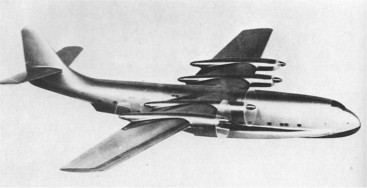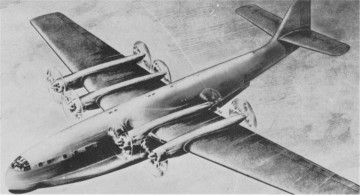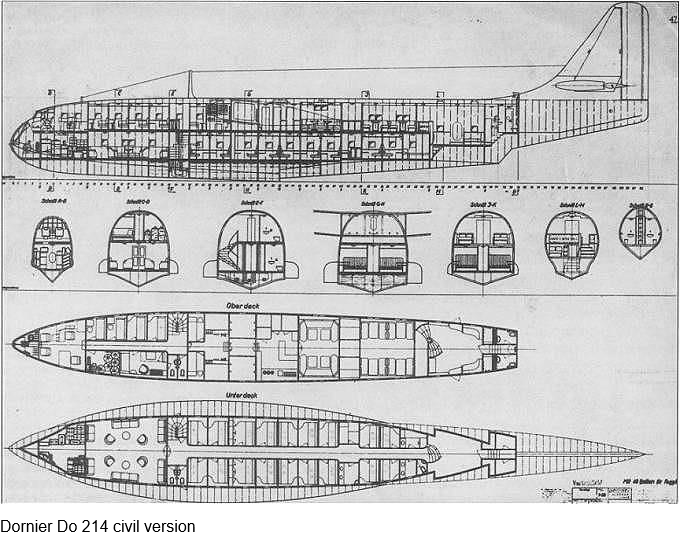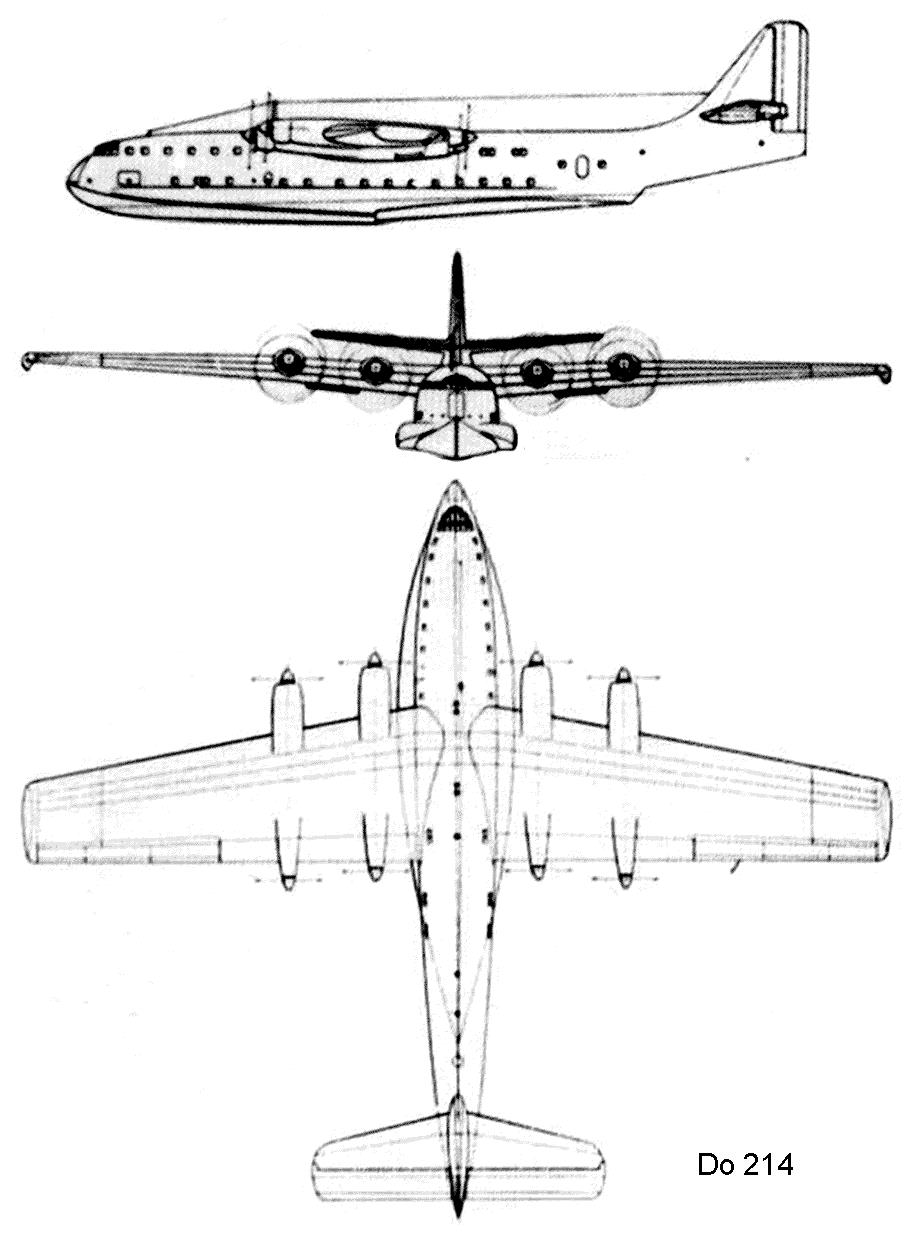


The Do214 was developed for Deutsche Lufthansa and the Reich Air Ministry. Design work and mock-up construction started in summer 1939. Upon instruction of the Reich Air Ministry, the civil version was later reconfigured for military use: troop transport in different variants, ambulance aircraft freight carrier, fuel carrier, mine laying aircraft, submarine supply aircraft. The two-step monocoque hull with several bulkheads was subdivided in an upper and a lower deck: Fuel was carried on the hull floor. The novel bulges on the hull thoroughly tested on the flying model Gö 8, were attached to the hull as independent components. In some military variants, the nose section of the fuselage opened sideways to allow loading of the lower deck, e.g. with trucks. In the DLH-version, the upper deck was reserved for the crew facilities and the lower deck had comfortable cabins and lounges for 40 passengers. The cantilever wing with a trapezoid planform consisted of the centre section integrated into the hull and two wing ends. Eight DB 606 or Jumo 218 engines were initially planned to power the aircraft, while for later projects the DB 613 A, B and C were to be used. The engines were installed in four tandem nacelles in the wing, with the rear engines hinged for tilting upward for take-off and landing.
Work on the Do 214 was stopped in 1942 because of the war.
| Type |
Civil version (Crew 12 + 36 - 100 passengers |
Military (Crew ~15) |
| Engine |
8 DB 613C ( 8 DB 606 or 8 Junkers Jumo 218) with 4-bladed VDM propellers (Front Ø 5.0 m, rear Ø 4.6 m) |
8 DB 613A or C |
| Dimensions |
Length 51.60 m, height 14.30 m, span 60.00 m, wing area 500 m2 |
Length 51.60 m, height 14.30 m, span 60.00 m, wing area 500 m2 |
| Weights |
Flying weight 145000 kg |
|
| Performance |
Max.. speed 490 km/h , cruising speed 425 km/h , range 6200 km, endurance , service ceiling 7000 m , climb |
|
| Armament |
|
|









